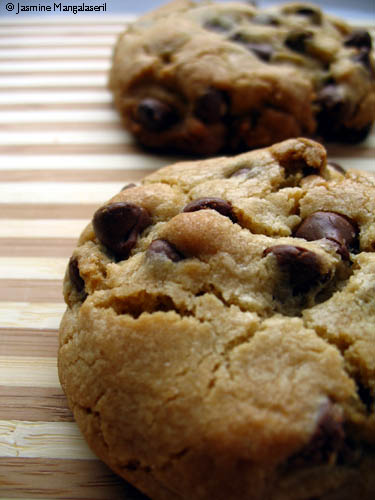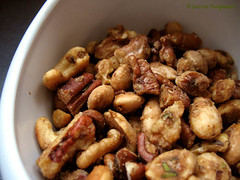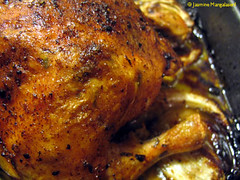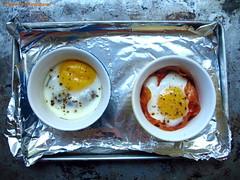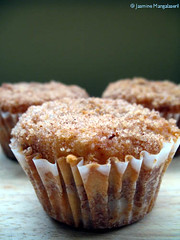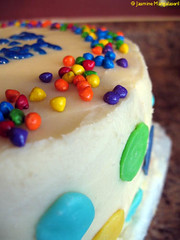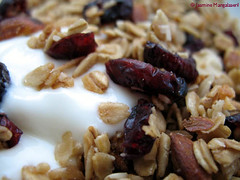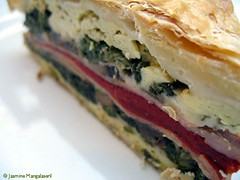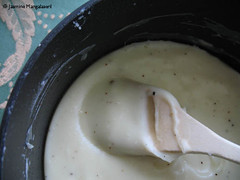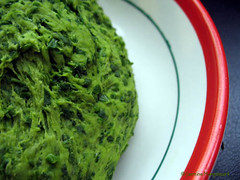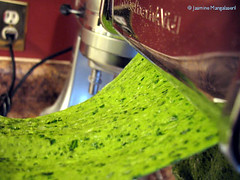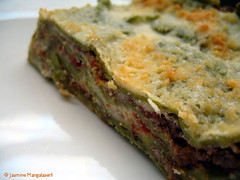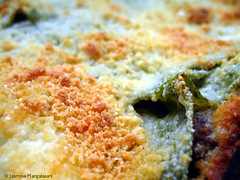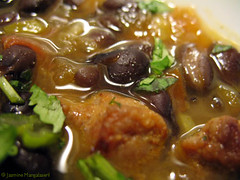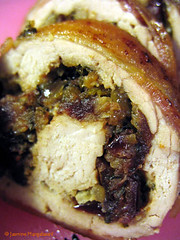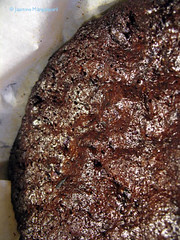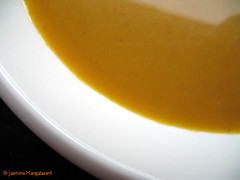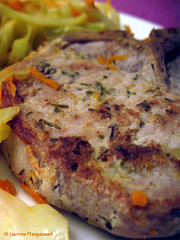 And all through these weeks,
And all through these weeks,I've been up to my eyeballs,
In cookies and treats.
Okay...that's all I can muster.
Needless to say December has been a whirl of lunches and dinners (some less edible than others), gatherings, treats and nights in the kitchen fighting with Beelzebub to procure 500 cookies. The next few weeks will bring much the same (except no more cookies--if you've not received any...well...umm...be nicer to me and we'll see if you get on next year's list).
I've had a couple of requests for recommendations for books for foodies. I receive a number of food related books to review each year--not everything gets a post, but I did select a couple which I've not yet reviewed but deserve to be mentioned. Both were given to me courtesy of their publishers:
by Tilar Mazzeo
Harper Collins
254pp/C$33.99
Mazzeo tells the story of a young widow, assumes the helm of what would become one of the world's most famous champagnes. Tracing Mme Cliquot's story from revolutionary to Napoleonic France, the author deftly combines socio-political events with the personal struggles of a young widow, mother and business woman.
by Harold McGee
Doubleday Canada/Random House Canada
576pp/C$42
McGee's latest tome easily takes the home cook by the hand and guides them through the basics of cooking and more important why recipes work (or more importantly, don't work). He guides the the reader though tools, concepts and ingredients in simple, straightforward language. I think it would be good for those who are rather new to the kitchen and it's frustrating ways.
So, that's it for me until the New Year. Until then, I'm leaving you with a plate of linzer sandwich cookies: nutty, sweet and flavoured with cinnamon and cloves.
The recipe is from Canadian Living's cookie edition. The only real change I made was to use preground filberts--I don't have a food processer, so I bought a packet of ground nuts and went to work. The recipe comes together nicely and is so easy to work with...and, unlike other cookie doughs, you can easily re-roll the scraps withouth the finished cookie toughening.
 Linzer Cookies
Linzer Cookies
Adapted from Canadian Living's recipe
Yield three dozen
The recipe is from Canadian Living's cookie edition. The only real change I made was to use preground filberts--I don't have a food processer, so I bought a packet of ground nuts and went to work. The recipe comes together nicely and is so easy to work with...and, unlike other cookie doughs, you can easily re-roll the scraps withouth the finished cookie toughening.
 Linzer Cookies
Linzer CookiesAdapted from Canadian Living's recipe
Yield three dozen
Ingredients
215g (1.5c) ground filberts (hazelnuts)
240g (2c) ap flour
1tsp baking powder
1.5tsp cinnamon
0.25tsp ground cloves
0.25tsp salt
grated zest of one lemon
280g (1.25c) butter
150g (0.75c) sugar
1 egg
1 egg yolk
1tsp vanilla
250ml (1c) jam (raspberry, apricot, strawberry, blueberry, whatever you have on hand)
215g (1.5c) ground filberts (hazelnuts)
240g (2c) ap flour
1tsp baking powder
1.5tsp cinnamon
0.25tsp ground cloves
0.25tsp salt
grated zest of one lemon
280g (1.25c) butter
150g (0.75c) sugar
1 egg
1 egg yolk
1tsp vanilla
250ml (1c) jam (raspberry, apricot, strawberry, blueberry, whatever you have on hand)
Method
Toast the ground nuts either by spreading it in an even layer on a tin foil-lined cookies sheet and popping it into a 180C/350F for about five minutes or until golden and fragrant OR toast the flour in batches on the stovetop, over a medium heat, in a large cast iron pan until golden and fragrant.
Mix toasted ground nuts with flour, baking powder, spices, salt and lemon zest.
In a separate bowl, cream together butter and sugar. Then beat in the vanilla, the whole egg and yolk one at a time. Stir in the nut flour mixture in two or three additions, until the dough comes together, without over mixing. Divide the dough in half and flatten into discs. Wrap with cling film and refrigerate for at least one hour.
Preheat oven to 180C/350F and line cookie sheets with parchment.
Roll out each disc onto a lightly floured surface to 0.5cm/0.25" thickness. Using a 6cm (2.5") round cutter. If desired, use a smaller cutter to cut a shaped hole from half the cookies (for the tops).
Bake 2.5cm (1") apart for 8-12 minutes, until the bottoms are lightly golden. Let cool on pans for a few minutes before transferring to racks. Let cool thoroughly before sandwiching.
Option: dust with icing sugar before serving.
To assemble:
Spoon a teaspoon of jam onto the bottom of a "bottom" biscuit and sandwich with a top.
Notes:
- I've not tried it but you can probably substitute other nuts for filberts, such as walnuts or almonds.
Toast the ground nuts either by spreading it in an even layer on a tin foil-lined cookies sheet and popping it into a 180C/350F for about five minutes or until golden and fragrant OR toast the flour in batches on the stovetop, over a medium heat, in a large cast iron pan until golden and fragrant.
Mix toasted ground nuts with flour, baking powder, spices, salt and lemon zest.
In a separate bowl, cream together butter and sugar. Then beat in the vanilla, the whole egg and yolk one at a time. Stir in the nut flour mixture in two or three additions, until the dough comes together, without over mixing. Divide the dough in half and flatten into discs. Wrap with cling film and refrigerate for at least one hour.
Preheat oven to 180C/350F and line cookie sheets with parchment.
Roll out each disc onto a lightly floured surface to 0.5cm/0.25" thickness. Using a 6cm (2.5") round cutter. If desired, use a smaller cutter to cut a shaped hole from half the cookies (for the tops).
Bake 2.5cm (1") apart for 8-12 minutes, until the bottoms are lightly golden. Let cool on pans for a few minutes before transferring to racks. Let cool thoroughly before sandwiching.
Option: dust with icing sugar before serving.
To assemble:
Spoon a teaspoon of jam onto the bottom of a "bottom" biscuit and sandwich with a top.
Notes:
- I've not tried it but you can probably substitute other nuts for filberts, such as walnuts or almonds.
- For crispier cookies, sandwich the day your are serving them, otherwise the the jam will soften the cookies, the longer they've been assembled. Nothing wrong with that...
cheers!
cheers!
jasmine




